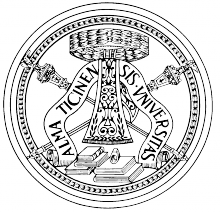- Home
- About
- Partners
- Newcastle University
- University of L'Aquila
- University of Manchester
- Alacris Teranostics GmbH
- University of Pavia
- Polygene
- Consiglio Nazionale delle Ricerche
- INSERM
- Certus Technology
- Charité Universitaet Medizin
- GATC Biotech
- University Medical Center Hamburg Eppendorf
- Evercyte GmbH
- University Hospital of Cologne
- PRIMM Srl
- University of Freiburg
- University of Antwerp
- Finovatis
- Research
- SYBIL at a glance
- Bone
- Growth plate
- Desbuquois dysplasia
- Diastrophic dysplasia
- MCDS
- Osteopetrosis
- Osteoporosis
- Osteogenesis imperfecta
- Prolidase deficiency
- PSACH and MED
- Systems biology
- SOPs
- Alcian Blue staining
- Bone measurements
- BrdU labelling
- Cell counting using ImageJ
- Chondrocyte extraction
- Cre genotyping protocol
- DMMB assay for sulphated proteoglycans
- Densitometry using ImageJ
- Double immunofluorescence
- Electron microscopy of cartilage - sample prep
- Extracting DNA for genotyping
- Grip strength measurement
- Histomorphometry on unon-decalcified bone samples
- Immunocytochemistry
- Immunofluorescence
- Immunohistochemistry
- Quantitative X-ray imaging on bones using Faxitron and ImageJ
- Skeletal preps
- TUNEL assay (Dead End Fluorimetric Kit, Promega)
- Toluidine Blue staining
- Toluidine Blue staining
- Von Kossa Gieson staining
- Wax embedding of cartilage tissue
- Contact Us
- News & Events
- Links
- Portal
University of Pavia
University of Pavia is among the oldest and most famous Italian universities. It was founded in the XIV century and the Faculty of Medicine rose in the same period. Its researchers and teaching programmes are acknowledged at the national and international level. Teaching is organized in nine faculties: Economics, Pharmacy, Law, Engineering, Literature & Philosophy, Medicine & Surgery, Science (Mathematics, Physics Chemistry, Biology and Natural Science), Political Science and Musicology. The University offers 86 Degree Courses, Doctorates, Post-graduate Schools, Specialization Courses and Masters. More than 1,100 people are involved in research and teaching activities and approximately 24,000 students attend the different courses.
Research is carried out in departments, institutes, clinics, centres, and laboratories in close association with public and private institutions, enterprises and companies
University of Pavia roles in SYBIL
UNIPV team, based at the Unit of Biochemistry of the Department of Molecular Medicine, will be directly involved in the generation of in vitro and in vivo models for genetic skeletal disorders (WP2-3). Osteoblast and chondrocyte cultures from patients as well as murine and zebrafish copies of human skeletal disorders will be then characterised by means of histological, biochemical and molecular techniques (WP 4-6). UNIPV will be involved in the validation of biomarkers for specific skeletal diseases in terms of biochemical studies of glycosaminoglycans present in blood and urine in in vivo models (WP7). They will also be testing specific signalling pathways and cellular function predicted to be involved in the skeletal phenotype with small molecules or other reagents (siRNA, ZFN) (WP8). UNIPV will also contribute to WP1, WP9 and WP10.
Facilities available at UNIPV include animal facility, cell culture facility, biochemical technologies including proteomics, transcriptomics and electron microscopy and facilities for tissue analysis.
University of Pavia researchers involved in SYBIL
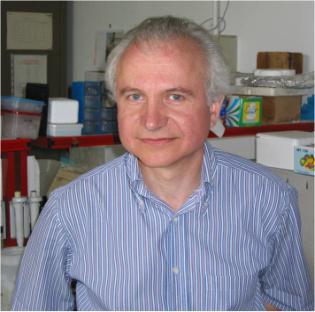 Prof Antonio Rossi – Prof. A. Rossi has a long standing interest in biochemical and molecular studies of chondrodysplasias, particularly the diastrophic dysplasia family of disorders which is caused by defects in a sulfate transporter crucial for cartilage proteoglycan sulfation. He has generated the first knock-in mouse model of diastrophic dysplasia (DTD) that reproduces the molecular defect, the biochemical and morphological abnormalities, the type of transmission and the clinical phenotype of DTD patients. Moreover, he is interested in other skeletal disorders caused by defects in proteoglycan synthesis and sulfation; these disorders are studied in vitro (i.e. patients’ cells) and also in vivo through the generation of animal models in order to identify disease mechanisms and targets that will ultimately pave the way for developing therapeutic strategies.
Prof Antonio Rossi – Prof. A. Rossi has a long standing interest in biochemical and molecular studies of chondrodysplasias, particularly the diastrophic dysplasia family of disorders which is caused by defects in a sulfate transporter crucial for cartilage proteoglycan sulfation. He has generated the first knock-in mouse model of diastrophic dysplasia (DTD) that reproduces the molecular defect, the biochemical and morphological abnormalities, the type of transmission and the clinical phenotype of DTD patients. Moreover, he is interested in other skeletal disorders caused by defects in proteoglycan synthesis and sulfation; these disorders are studied in vitro (i.e. patients’ cells) and also in vivo through the generation of animal models in order to identify disease mechanisms and targets that will ultimately pave the way for developing therapeutic strategies.
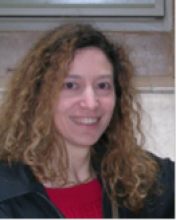 Prof Antonella Forlino – Prof. Antonella Forlino research activity is focused on the molecular, biochemical, and functional study of genetic diseases of the connective tissue, in particularly Osteogenesis Imperfecta (OI), and Prolidase Deficiency (PD). Osteogenesis Imperfecta is a bone disease caused by mutations in genes involved in type I collagen synthesis, secretion and post translation modification or in genes regulating osteoblasts differentiation and activity. Prof Forlino’s characterized the molecular defect in some OI patients with collagen I mutations (Classical OI) contributing to the hypothesis of a regional model to explain the genotype/phenotype relationship in classical OI and she is particularly interested into better understand the phenotypic variability characteristic of OI using molecular and proteomic approaches. Prof. Forlino generated and characterized the first knock-in murine model for OI (BrtlIV). She developed for this OI model a in utero cell therapy attempt and more recently she used in vitro allele specific shRNA to specifically target the mutant allele expression in this mouse. She is now combining cellular therapy with gene therapeutic technique to develop a new OI therapy. She identified in the endoplasmic reticulum stress, a possible modulator of OI outcome and she is interested into pharmacologically target it to ameliorate the bone outcome using a zebrafish model of OI. PD is a rare skin disease with bone associated outcome caused by mutation in prolidase, an enzyme responsible for iminodipeptides hydrolysis and involved in the last step of collagen catabolism. Prof. Forlino is mainly investigating the role of the prolidase enzyme in skeletogenesis using the murine model dark-like carrying 4 bp deletion in PEPD gene, coding for the prolidase enzyme.
Prof Antonella Forlino – Prof. Antonella Forlino research activity is focused on the molecular, biochemical, and functional study of genetic diseases of the connective tissue, in particularly Osteogenesis Imperfecta (OI), and Prolidase Deficiency (PD). Osteogenesis Imperfecta is a bone disease caused by mutations in genes involved in type I collagen synthesis, secretion and post translation modification or in genes regulating osteoblasts differentiation and activity. Prof Forlino’s characterized the molecular defect in some OI patients with collagen I mutations (Classical OI) contributing to the hypothesis of a regional model to explain the genotype/phenotype relationship in classical OI and she is particularly interested into better understand the phenotypic variability characteristic of OI using molecular and proteomic approaches. Prof. Forlino generated and characterized the first knock-in murine model for OI (BrtlIV). She developed for this OI model a in utero cell therapy attempt and more recently she used in vitro allele specific shRNA to specifically target the mutant allele expression in this mouse. She is now combining cellular therapy with gene therapeutic technique to develop a new OI therapy. She identified in the endoplasmic reticulum stress, a possible modulator of OI outcome and she is interested into pharmacologically target it to ameliorate the bone outcome using a zebrafish model of OI. PD is a rare skin disease with bone associated outcome caused by mutation in prolidase, an enzyme responsible for iminodipeptides hydrolysis and involved in the last step of collagen catabolism. Prof. Forlino is mainly investigating the role of the prolidase enzyme in skeletogenesis using the murine model dark-like carrying 4 bp deletion in PEPD gene, coding for the prolidase enzyme.
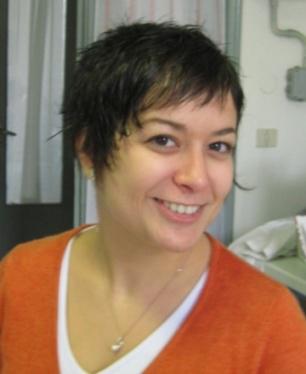 Dr Roberta Gioia – Dr. Roberta Gioia is a senior post-doc with few years of expertises in murine adult stem cells isolation and differentiation and now responsible for the Pavia zebrafish facility and the generation and characterization of zebrafish skeletal models for dominant and recessive Osteogenesis Imperfecta.
Dr Roberta Gioia – Dr. Roberta Gioia is a senior post-doc with few years of expertises in murine adult stem cells isolation and differentiation and now responsible for the Pavia zebrafish facility and the generation and characterization of zebrafish skeletal models for dominant and recessive Osteogenesis Imperfecta.
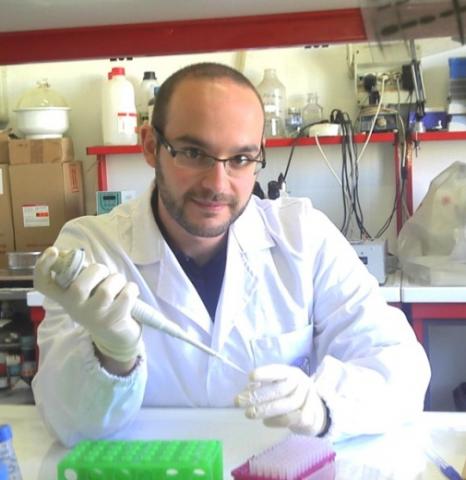 Luca Monti – Luca is a PhD student working on mouse models of chondrodysplasias.
Luca Monti – Luca is a PhD student working on mouse models of chondrodysplasias.
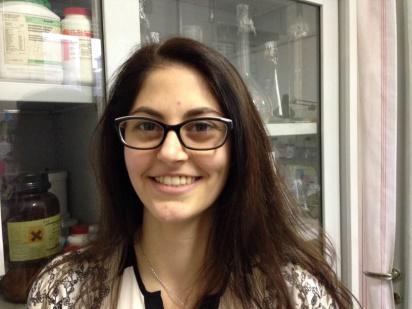 Silvia Maruelli – Silvia is a PhD student working on mouse model of skeletal disorders.
Silvia Maruelli – Silvia is a PhD student working on mouse model of skeletal disorders.

